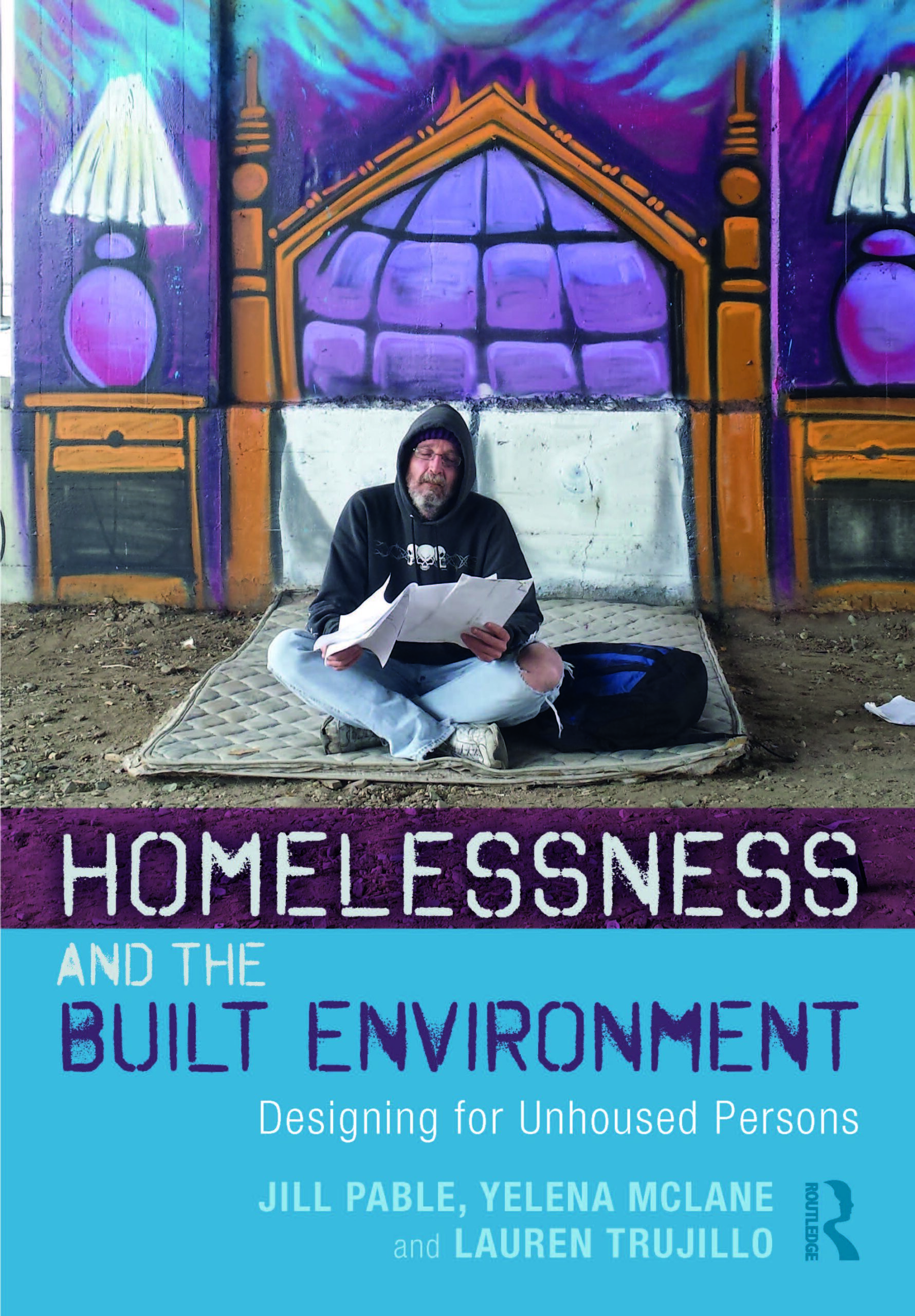Homelessness and the Built Environment: Designing for Unhoused Persons. Routledge 2021.
Homelessness and the Built Environment: Designing for Unhoused Persons by IAD faculty members Jill Pable and Yelena McLane and graduate student alumnus Lauren Trujillo provides a practical introduction to the effective physical design of built facilities that assist unhoused persons. Arising at a time of emerging design-specific empirical studies in mental and behavioral environments to approach people’s needs, the book highlights the positive impact intentional design can have on human perception and how design influences people’s choices and actions.
“The presence of a growing body of research findings from psychology, environmental psychology, social work and other areas is starting to make clear the significant impact that built environments have on people’s perceptions,” says Pable. The publication focuses on the inspiration behind the positive impact that physical design can have on people’s experiences. “Those perceptions can also include how people feel about themselves and other people. That seems particularly important if people have experienced a crisis or trauma recently, such as loss of one’s home.”
“This book was written to introduce readers to the complexities and current practices of designing built environments to meet the needs of homeless persons,” says McLane. “It offers an historical overview of the subject and practical analyses of recent projects from North America, Europe, Australia, and New Zealand, which, in differing ways, assist unhoused person.” Within each chapter are also learning materials for educational use.
The work addresses four main objectives:
- Document architectural responses to homelessness in multiple countries, providing a means to effectively share approaches and ideas.
- Provide interior/architecture design practitioners a way to become informed and make decisions on applied building projects.
- Provide information to support organizations and policy makers confronted with the need to accommodate their municipality’s burgeoning unhoused population, describing practical strategies that support an effective architectural response.
- Inform design researchers and students who engage with this issue, providing necessary orientation and citation knowledge to leverage their work.
When asked how the book can help other professionals and students with their perspective in the design industry, McLane described that “we examined a range of design considerations including space planning, circulation and wayfinding, visibility, lighting, and materials and finishes within shelter, permanent supportive housing, and day centers. We hope that the book will become a reference for design students and professionals interested in this important social issue.”
Jill Pable is a professor and chair of the Interior Architecture & Design Department at Florida State University. Her research focuses on the design of environments for people experiencing trauma and she leads Design Resources for Homelessness, a non-profit research communication organization at designresourcesforhomelessness.org.
Yelena McLane is an assistant professor in the Interior Architecture & Design Department at Florida State University. She explores relationships between interior configurations and users’ experiences within spaces, and social influences upon these relationships. Her recent scholarship focuses on resident perceptions of community spaces in permanent supportive housing.
Lauren Trujillo holds a BS and an MFA in interior design and has served as an adjunct instructor in interior design and art history at several colleges. She is a licensed interior designer in Florida and is a LEED GA. Her research interests include intercultural design and education.
Homelessness and the Built Environment: Designing for Unhoused Persons was published by Routledge in July of this year, and is currently available here.
